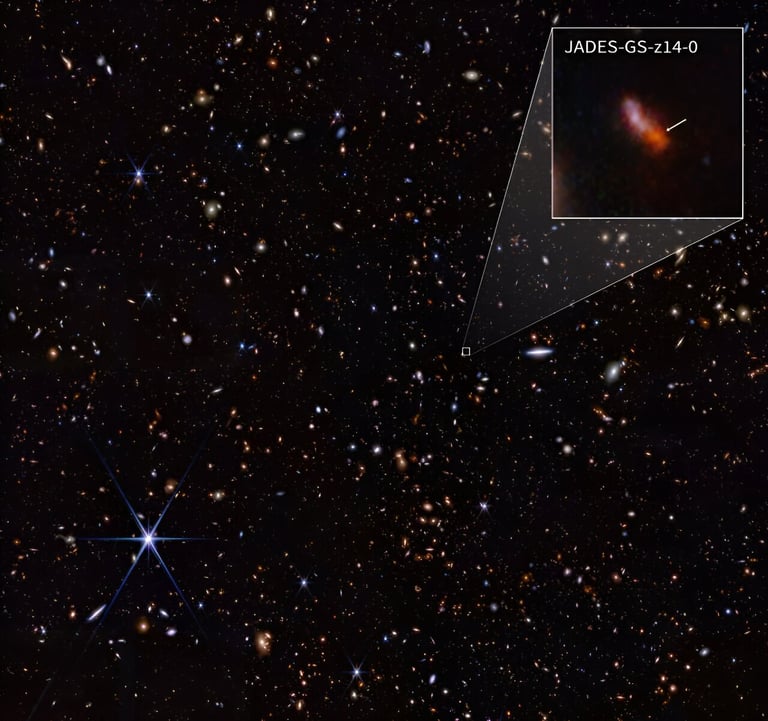NASA's Webb Telescope Unveils Oldest, Brightest Galaxies, Challenging Early Universe Theories
June 2, 2024
Astronomers using NASA's James Webb Space Telescope discovered the oldest-known galaxy, JADES-GS-z14-0, dating 290 million years after the Big Bang.
JADES-GS-z14-0 is remarkably bright and massive, measuring 1,700 light years across and equivalent to 500 million suns in mass.
This galaxy is forming new stars rapidly at a rate of about 20 per year, challenging previous understanding of early galaxies.
The study also identified the second oldest-known galaxy, JADES-GS-z14-1, which is smaller and forms approximately two new stars annually.
The brightness of these ancient galaxies is a mystery, with hypotheses including supermassive black holes and unexpected star formations.
Further research is required to understand the luminosity of these early cosmic entities.
This breakthrough enhances our understanding of the cosmic dawn and paves the way for discovering more distant galaxies.
Summary based on 4 sources
Get a daily email with more Science stories
Sources

Mashable • Jun 1, 2024
New Webb telescope image isn't just stunning. It shattered a record.
Phys.org • Jun 1, 2024
Webb telescope finds most distant galaxy ever observed, again
The Indian Express • Jun 2, 2024
James Webb Space Telescope spots earliest-known galaxy: What a new study says